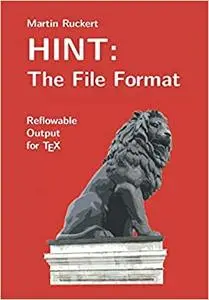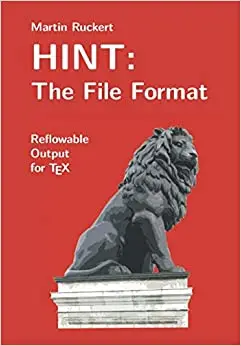Martin Ruckert, "HINT: The File Format: Reflowable Output for TeX"
English | 2019 | ISBN: 1079481591 | PDF | pages: 218 | 0.8 mb
English | 2019 | ISBN: 1079481591 | PDF | pages: 218 | 0.8 mb
The experimental HINT file format is intended as a replacement of the DVI or PDF file format for on-screen reading of TeX output. Its design therefore supports the following features: reflow of text to fill a window of variable size, efficient and high quality rendering on mobile devices, simple generation from existing TeX input files, and an exact match of traditional TeX output if the window size matches the paper size. Today, there are many good formal methods to specify a file format, and the time where file formats where implicit in the programs that would read or write these files seems like ancient history. The specification of the HINT file format, however, is given as two literate programs, stretch and shrink. The first reads a HINT file and translates it to the a readable (long) format and the second goes the opposite direction and writes a HINT file. Of course, these programs use modern means like regular expressions and grammar rules to describe input and output and are, to a large extend, generated from the formal description using lex and yacc. For this purpose, the cweb system for literate programming had to be extended to generate and typeset lex and yacc files. Still I consider this representation an experiment, and I hope that it combines the advantages of a formal syntax specification with the less formal exposition of programs that illustrate the reading and writing process and can serve as reference implementations. The programs stretch and shrink can also be used to verify that HINT files conform to this format specification.



